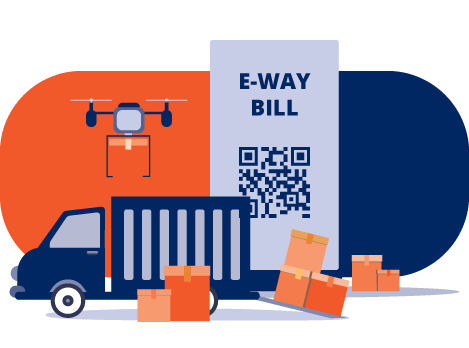E-way bills are electronic documents that are mandatory for all businesses that are involved in the transportation of goods. It is an essential part of GST compliance, and it tracks the movement of goods across state borders and within states. The e-way bill system was introduced in India in 2018, and since then, it has made the process of transporting goods a lot smoother and efficient. In this article, we will discuss easy ways to apply for an e-way bill online.
Step 1: Registering on the GST Portal
Before one can start generating e-way bills, they need to have a GSTIN number and register on the GST portal. The GST Portal is a one-stop-shop for all GST-related activities. Once registered, they must log in to their account and ensure that all the details on their profile are correct.
Step 2: Adding the Customer/Supplier
The next step is to add the details of the customer or supplier on the GST portal. For this, they need to click on the ‘Register/Update’ button, which is on the left-hand side of the screen. They will then need to provide the necessary details such as the name and address of the customer or supplier. Once the details are added, they will reflect in the drop-down menu at the time of generating the e-way bill.
Step 3: Generating the E-way Bill
To generate the e-way bill, they need to click on the Eway Bill option, which is on the left-hand side of the screen. They will then need to select ‘Generate New’ from the drop-down menu. They need to enter the details such as the invoice or bill number, date, and value of the goods being transported. They must also specify the mode of transportation and the distance covered during the transit.
Step 4: Filing of Part B of the E-way Bill
Once the details of the consignment are entered, they need to fill out Part B of the e-way bill. This part includes details such as the vehicle number and the transporter’s details. If the transporter has a GSTIN number, it should be mentioned in this section as well.
Step 5: Validating the E-way Bill
After the e-way bill is generated, it needs to be validated. This process ensures that all the details mentioned in the e-way bill are correct. Once the bill is validated, the next step is to generate a printout of the same. This printout is essential as it needs to be carried with the consignment throughout its journey.
Step 6: Updating the E-way Bill
In case there are any changes in the details of the e-way bill, it is essential to update the same. For this, they need to click on the ‘E-way Bill’ option, which is on the left-hand side of the screen, and select ‘Update EWB.’ They can then make the necessary changes and save the updated e-way bill.
Step 7: Cancelling the E-way Bill
In case the consignment is canceled, they need to cancel the e-way bill as well. For this, they need to click on the ‘E-way Bill’ option, which is on the left-hand side of the screen, and select ‘Cancel EWB.’ They will then need to provide the reason for cancellation and submit the same.
Conclusion
The process of generating an e-way bill online is straightforward and can be completed in a few easy steps. These steps ensure that all the necessary details are added to the e-way bill, making it a valid document for the transportation of goods. The e-way bill system has made the process of transporting goods a lot more efficient and effective.
It has eliminated the need for physical documentation and has streamlined the process of transporting goods across state borders and within states. With the help of the above steps, businesses can generate e-way bills quickly and efficiently, ensuring GST compliance and hassle-free transportation of goods.

